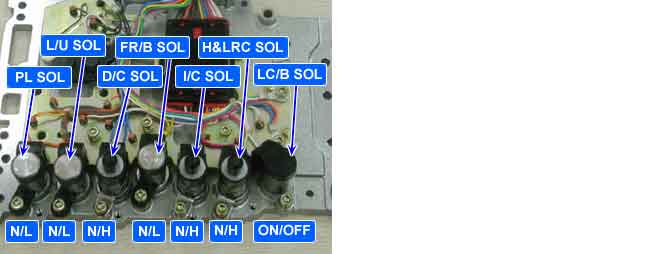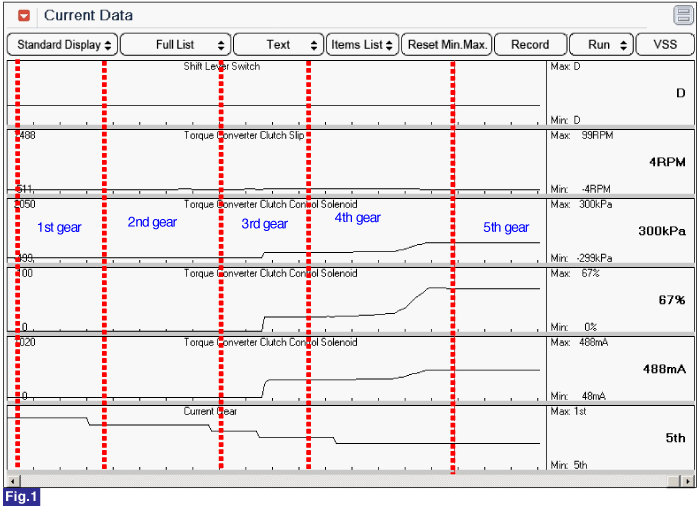

The PCM/TCM controls the locking and unlocking of the Torque Converter Clutch ( or Damper Clutch ), to the input shaft of the transmission, by appling hydraulic pressure. The main purpose of T/C clutch control is to save fuel by decreasing the hydraulic load inside the T/C. The TCM outputs duty pulses to control the Damper Clutch Control Solenoid Valve( DCCSV ) and hydraulic pressure is applied to DC according to the DCC duty ratio value. When the duty ratio is high, high pressure is applied and the Damper Clutch is locked. The normal operating range of the Damper Clutch Control current is from 0.05A(unlocked) to 0.75A(locked).
The TCM checks the Damper Clutch Control Signal by monitoring the feedback signal from the solenoid valve drive circuit. If an unexpected signal is monitored, (For example, high voltage is detected when low voltage is expected, or low voltage is detected when high voltage is expected) the TCM judges that the DCCSV circuit is malfunctioning and sets this code.
Item | Detecting Condition | Possible Cause |
DTC Strategy |
•
Check voltage range(Open, Shrot) | ※ Torque Converter Clutch = Damper Clutch
•
Faulty Torque Conveter Clutch
•
Faulty Torque Conveter Clutch Solenoid Valve
•
Faulty Valve Body
•
Fautly PCM/TCM |
Enable Conditions |
•
10V < Actuator Supply Voltage < 16V | |
Threshold Value |
•
Hardware IC check | |
Diagnostic Time |
•
More than 0.2sec | |
Fail Safe |
•
Torque Converter Clutch "OFF"
•
Locked as 4th gear |

Fig 1) Torque Converter Operation